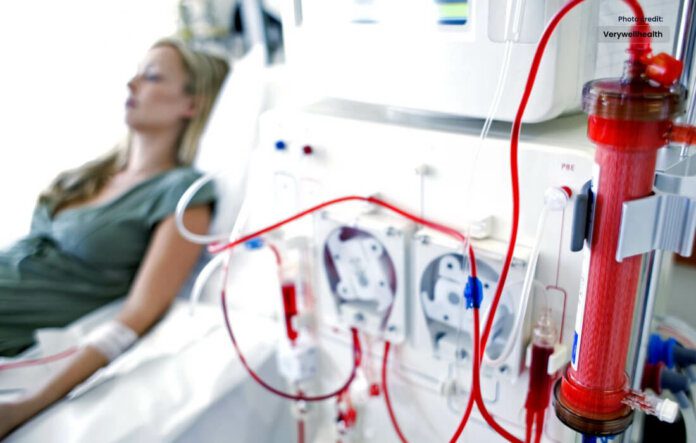Hemodialysis is a medical treatment use to perform the critical functions of the kidneys when they can no longer do so effectively.
Introduction
The human body is a complex system of interconnected functions, each contributing to overall health and well-being. When one of these systems, such as the kidneys, starts to malfunction, medical intervention becomes vital. Hemodialysis, a remarkable medical procedure, steps in as a lifeline for individuals with kidney failure. In this blog, we’ll delve into the world of hemodialysis, its importance, the procedure, and its impact on patients’ lives.
Understanding Hemodialysis
The procedure involves removing waste, excess fluids, and toxins from the blood, maintaining the body’s electrolyte balance, and regulating blood pressure. Hemodialysis is essential for individuals with end-stage renal disease (ESRD), a condition where the kidneys are severely impaired and can’t perform their crucial tasks adequately.
The Hemodialysis Procedure
The hemodialysis process takes place in a specialize medical setting, such as a dialysis center or a hospital. Here’s an overview of the procedure:
- Vascular Access: Before each hemodialysis session, a vascular access point is establish. This can be done through an arteriovenous (AV) fistula, AV graft, or central venous catheter. These access points allow the blood to be safely remove, filter, and return to the body.
- Blood Filtration: During the procedure, the patient’s blood is carefully pumped through a dialysis machine. Inside the machine, the blood passes through a filter known as a dialyzer. This filter acts as an artificial kidney, removing waste, excess fluids, and toxins.
- Dialysate Solution: In the dialysis machine, the blood is exposed to a specially formulated dialysate solution. This solution helps balance electrolytes and remove waste from the blood.
- Monitoring: Throughout the procedure, healthcare professionals closely monitor the patient’s blood pressure, heart rate, and other vital signs to ensure their safety.
- Duration: Hemodialysis sessions typically last three to four hours and are typically required multiple times a week, depending on the patient’s specific needs and condition.
Impact on Patients’ Lives
Hemodialysis is not just a medical procedure; it’s a lifeline for individuals whose kidneys can no longer function properly. It offers a second chance at life by:
- Enhancing Quality of Life: Hemodialysis helps remove toxins and excess fluids, alleviating symptoms such as fatigue, swelling, and shortness of breath.
- Prolonging Life: For those with ESRD, hemodialysis can significantly extend life expectancy by maintaining critical bodily functions.
- Enabling Normal Activities: Although the treatment schedule can be demanding, many individuals on hemodialysis can lead relatively normal lives, continuing work, hobbies, and spending time with loved ones.
- Preparation for Transplant: This can serve as a bridge to a kidney transplant, sustaining the patient’s health until a suitable donor becomes available.
Challenges and Considerations
While hemodialysis offers substantial benefits, it’s not without challenges:
- Lifestyle Adjustments: Patients need to adjust their routines to accommodate regular treatment sessions, dietary restrictions, and fluid intake management.
- Emotional Impact: Dealing with a chronic condition and the demands of treatment can take a toll on patients’ mental and emotional well-being.
- Potential Complications: It can lead to complications such as infections, blood pressure fluctuations, and access site problems.
Conclusion
Hemodialysis is a medical marvel that has transformed the lives of countless individuals with kidney failure. It bridges the gap between the limitations of a malfunctioning kidney and the possibility of a healthier future. Through advanced technology, skilled medical professionals, and unwavering patient determination, hemodialysis stands as a testament to human resilience and the incredible strides made in medical science.




